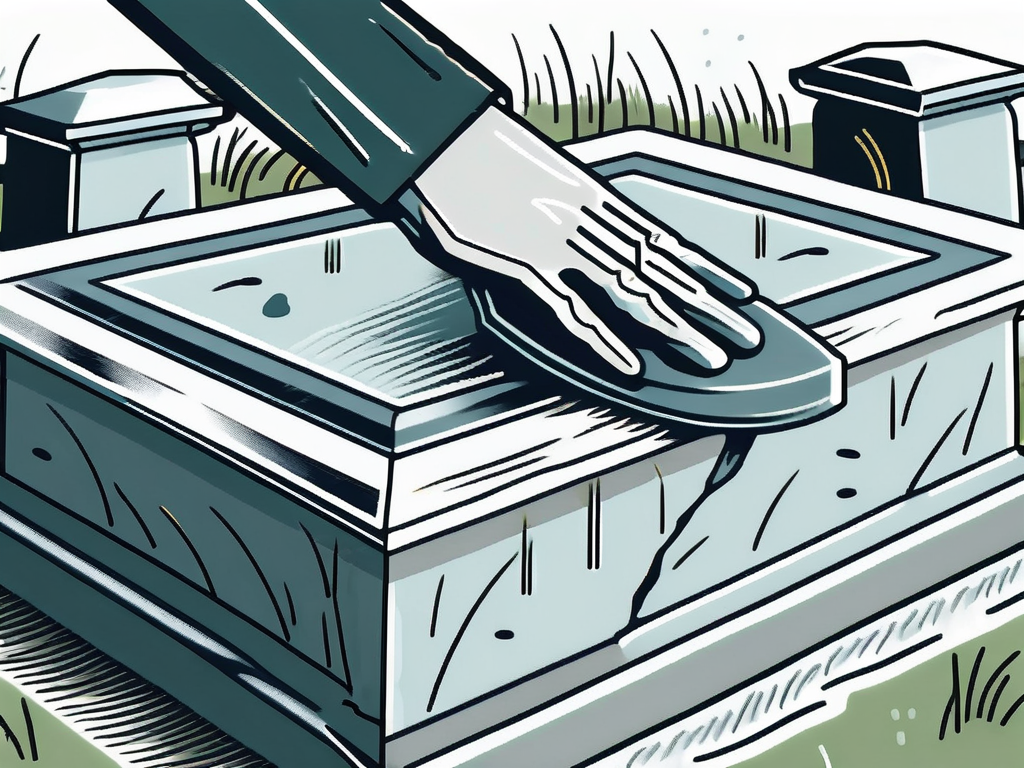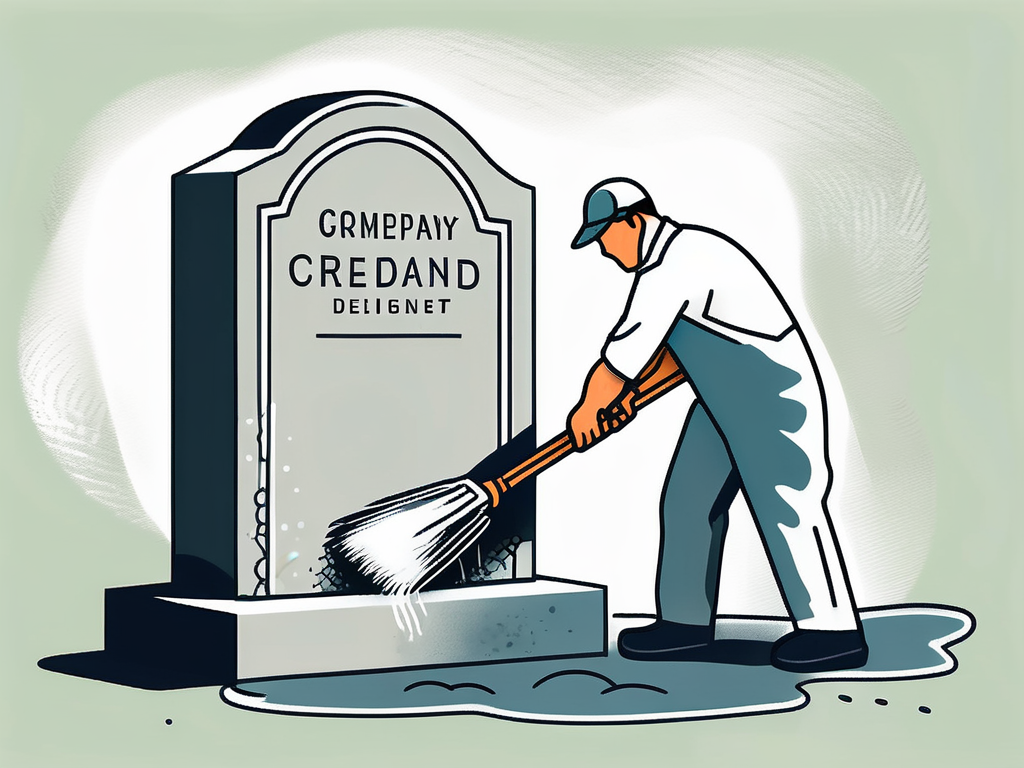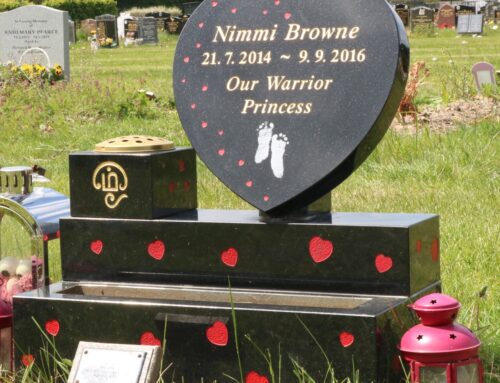In many ways, a headstone serves as a lasting tribute to those who have passed away. It not only provides a physical marker for their final resting place but also serves as a connection for future generations to their ancestors. However, over time, these meaningful memorials can become weathered and dirty, losing their original beauty. Cleaning a headstone requires careful consideration and a delicate touch to ensure that its integrity and historical value are preserved. In this guide, we will explore the process of assessing the cleaning needs of headstones and provide you with valuable insights to help you restore these precious monuments to their original glory.
Assessing the Cleaning Needs of a Headstone
Determining the Level of Cleaning Required
Before embarking on the cleaning process, it is crucial to assess the level of cleaning required for the headstone. You must take into account various factors such as the material of the headstone, the extent of dirt and staining, and any existing damage or wear. By understanding the specific needs of the headstone, you can determine the most appropriate cleaning methods to employ.
When evaluating the material of the headstone, it’s important to note that different types of stone may react differently to cleaning agents. For example, marble headstones are more sensitive to acidic cleaners compared to granite or slate headstones. Understanding the composition of the headstone will help you select a cleaning solution that is both effective and safe for the material.
Factors to Consider Before Cleaning a Headstone
In addition to determining the cleaning needs, there are several factors that should be considered before cleaning a headstone. Firstly, it is essential to ensure that you have the necessary permissions to clean the headstone, especially if it is located in a cemetery or a protected area. Additionally, weather conditions and the time of year should be taken into account, as certain cleaning methods may be more effective in specific conditions. Finally, consider any environmental factors, such as the presence of nearby plants or trees, which may contribute to the buildup of dirt and biological growth.
Another crucial factor to consider is the historical significance of the headstone. Some headstones may be of cultural or historical importance, requiring special care and attention during the cleaning process. It is important to research the significance of the headstone before proceeding with any cleaning activities to ensure that its integrity and historical value are preserved.
Gentle Cleaning Methods for Headstones
The Importance of Using Gentle Techniques
When it comes to cleaning headstones, the use of gentle techniques is of utmost importance. Harsh chemicals and abrasive materials can cause irreversible damage to delicate surfaces, leading to the loss of important inscriptions or details. Opting for gentle methods not only helps preserve the integrity of the headstone but also ensures that future generations will be able to appreciate its historical value.
It is essential to approach headstone cleaning with a mindset of respect and care. These monuments serve as lasting tributes to individuals who have passed on, and maintaining their appearance is a way to honour their memory. By using gentle cleaning methods, you are not only preserving the physical structure of the headstone but also showing reverence for the lives and stories it represents.
Step-by-Step Guide to Safely Clean a Headstone
While each headstone may require slightly different cleaning methods, there are general steps that can be followed to ensure a safe and effective cleaning process:
- Start by removing loose dirt and debris from the surface of the headstone using a soft brush or cloth.
- Prepare a cleaning solution by mixing a small amount of mild soap or stone cleaner with water. Avoid using bleach or other harsh chemicals.
- Dampen a soft sponge or cloth with the cleaning solution and gently scrub the headstone, paying close attention to stained or dirty areas.
- Rinse the headstone thoroughly with clean water, ensuring that all soap residue is removed.
- Allow the headstone to air dry naturally, avoiding the use of towels or other materials that could potentially scratch the surface.
Remember, patience is key when cleaning headstones. Rushing the process or using aggressive cleaning techniques can do more harm than good. Taking the time to delicately remove dirt and grime ensures that the headstone’s beauty is revealed without causing any damage. Additionally, consider using biodegradable and eco-friendly cleaning products to minimise environmental impact while caring for these historical markers.
Best Practices for Cleaning Headstones
Headstones are not only a physical marker of a person’s final resting place but also a piece of history that deserves to be preserved and maintained. When it comes to cleaning headstones, following best practices can help you achieve the best possible results and ensure the longevity of these important monuments.

One additional tip to consider is to use a biodegradable and non-toxic cleaning solution specifically designed for headstones. These solutions are gentle on the stone’s surface while effectively removing dirt, grime, and biological growth without causing any harm. Always remember to read the product labels and instructions before use to prevent any unintended damage.
Tips for Effective Headstone Cleaning
When it comes to cleaning headstones, the following best practices can help you achieve the best possible results:
- Always test any cleaning products on a small, inconspicuous area of the headstone before applying them to the entire surface.
- Use soft brushes, sponges, or cloths to avoid scratching the headstone’s surface.
- Avoid using pressure washers or high-pressure sprays, as they can cause damage to the headstone.
- Take regular care of the surrounding area by removing fallen leaves, dirt, or other debris that may contribute to the buildup of dirt on the headstone.
Preserving the integrity of headstones requires a delicate balance between effective cleaning practices and gentle care to prevent any irreversible damage. By following these tips and being mindful of the materials and methods used, you can ensure that these historical markers remain in pristine condition for generations to come.
Common Mistakes to Avoid When Cleaning Headstones
While it is essential to know what to do when cleaning a headstone, it is equally crucial to be aware of common mistakes that should be avoided:
- Using harsh chemicals or abrasive materials, which can damage the surface of the headstone.
- Scrubbing too vigorously, which can cause erosion or wear of the headstone’s surface.
- Overlooking the importance of regular maintenance, leading to the accumulation of dirt and biological growth over time.
Proper Techniques for Cleaning Headstones
How to Use Water and Soft Scrapers for Cleaning
For certain types of headstones, such as those made of granite, water and soft scrapers can be used for cleaning. Begin by wetting the surface of the headstone with clean water, then use a soft scraper to gently remove any dirt or staining. Take caution not to apply excessive pressure, as this can cause scratches or other damage to the surface. After scraping, rinse the headstone thoroughly with water and allow it to air dry.

It’s important to note that soft scrapers are preferred for delicate headstones, as they are less likely to cause any abrasions or scratches. The use of water in the cleaning process helps to loosen dirt and grime without the need for harsh chemicals that could potentially harm the headstone’s material. Additionally, opting for a soft-bristled brush in conjunction with water can aid in reaching intricate details on the headstone’s surface.
The Benefits of Working Methodically When Cleaning Headstones
When cleaning headstones, adopting a methodical approach can yield the best results. Start from the top of the headstone and work your way down, ensuring that each section is thoroughly cleaned before moving on to the next. This systematic approach guarantees that no area is overlooked and allows for a more efficient cleaning process.
Working methodically provides the opportunity to assess the condition of the headstone as you progress through the cleaning process. This allows for the early identification of any areas that may require additional care or specialised cleaning techniques. By taking the time to clean the headstone in a structured manner, you not only ensure a thorough cleaning but also contribute to the preservation of its integrity for years to come.
Maintaining the Integrity of Headstones
Understanding the Delicacy of Headstone Cleaning
It is crucial to approach headstone cleaning with a deep understanding of their delicacy. These monuments have withstood the test of time, and any cleaning efforts should be undertaken with great care to ensure their preservation. Always prioritise the long-term integrity and historical value of the headstone over temporary aesthetic improvements.
Headstones serve as poignant markers of history, bearing witness to the passage of time and the memories of those who have gone before us. The materials used in crafting these solemn structures, such as marble, granite, or limestone, can be sensitive to harsh cleaning agents or abrasive techniques. Therefore, it is essential to treat them with the respect and gentle care they deserve.
Why Gentle Cleaning Yields the Best Results
Gentle cleaning methods not only help protect the headstone’s integrity but also yield the best long-term results. By using gentle techniques, you can remove dirt and staining without causing any damage, ensuring that the headstone remains a testament to the past for years to come.
Moreover, gentle cleaning practices are not only beneficial for the headstone itself but also for the surrounding environment. Harsh chemicals can leach into the soil, potentially harming nearby flora and fauna. By opting for gentle cleaning solutions, you are not only preserving the headstone but also demonstrating a commitment to environmental stewardship.
Specialised Cleaning Solutions for Headstones
D2: A Mild Biological Cleaning Solution
In situations where headstones have been affected by biological growth, such as muold or lichen, specialised cleaning solutions can be employed. One such solution is D2, a mild biological cleaning agent widely used for the restoration and preservation of historic monuments. D2 is designed to safely remove biological growth without causing harm to the headstone or the environment. However, it is crucial to follow the manufacturer’s instructions carefully when using any specialised cleaning solution.
By following these guidelines and taking a meticulous approach to assessing the cleaning needs of headstones, you can play an essential role in preserving these cherished memorials. Remember, a clean and well-maintained headstone not only honours the memory of those who have passed, but also allows future generations to connect with their heritage and appreciate the rich history encapsulated within these remarkable monuments.
It is important to note that while D2 is effective for biological growth, it may not be suitable for all types of headstone cleaning. Different cleaning solutions are available for various types of stains and materials. For example, marble headstones require a different approach compared to granite or limestone ones. Understanding the composition of the headstone and the nature of the stain is crucial in selecting the appropriate cleaning solution.
If you are looking to choose a Headstone, speak to our team who can offer advice and support to bear some of the burden. Making the right decision now can make maintenance and upkeep a lot less strenuous for years to come. Contact us here – we would be happy to help.





